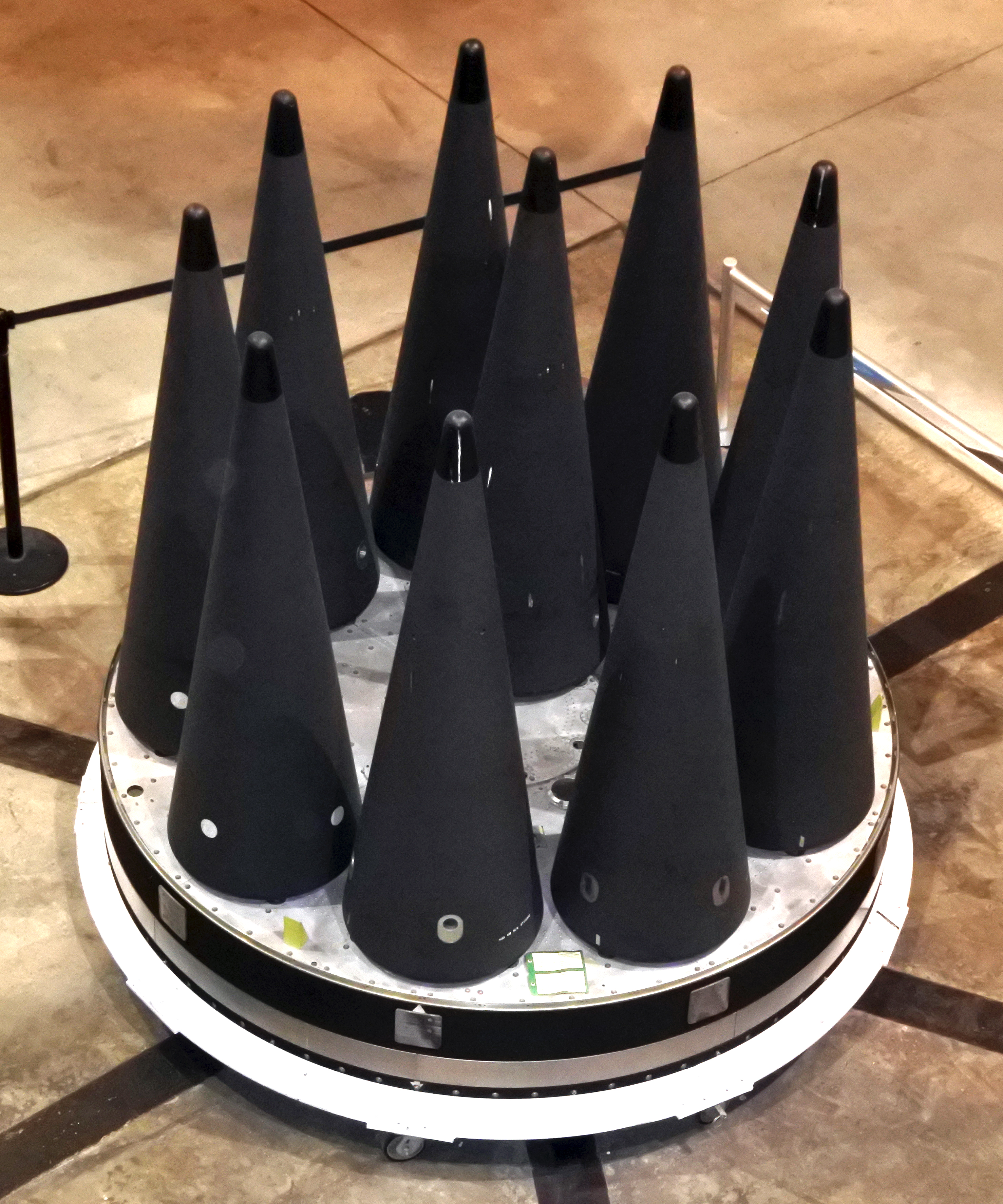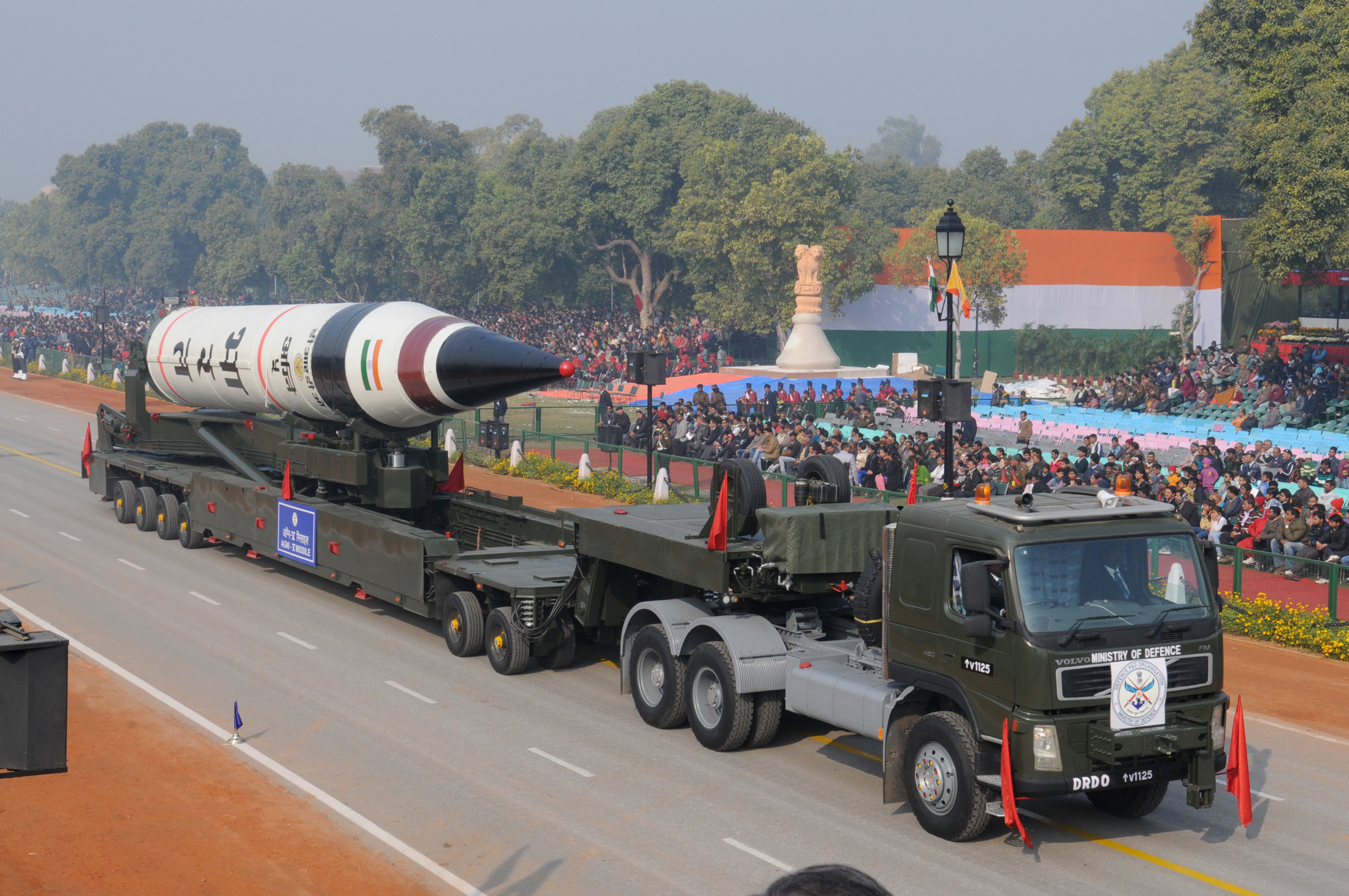|
Agni-P
Agni-P or Agni-Prime ( Agnī ''"Fire"'') is a medium-range ballistic missile being developed by Defence Research and Development Organisation (DRDO) as a successor for Agni-I and Agni-II missiles in the operational service of Strategic Forces Command with significant upgrades in the form of composite motor casing, maneuverable reentry vehicle (MaRV) along with improved propellants, navigation and guidance systems. Agni-P is a two-stage, road mobile and solid-fueled MRBM which is transported by a truck and launched via a canister.It is a ballistic missile with dual redundant navigation and guidance system. It is the sixth missile in the Agni (missile) series of ballistic missile. History and development Beginning in 2016, various media organisations have reported that DRDO is developing a successor of Agni-I called Agni-1P with two stages that borrowed the newer technologies from Agni-IV and Agni-V to increase accuracy and reliability. India started working on area denial we ... [...More Info...] [...Related Items...] OR: [Wikipedia] [Google] [Baidu] |
Agni (missile)
The Agni missile (अग्नि IAST: Agni ''"Fire"'') is a family of medium to intercontinental range ballistic missiles developed by India, named after one of the five elements of nature. Agni missiles are long range, nuclear weapons capable, surface to surface ballistic missiles. The first missile of the series, Agni-I was developed under the Integrated Guided Missile Development Program (lGMDP) and tested in 1989. After its success, Agni missile program was separated from the GMDP upon realizing its strategic importance. It was designated as a special program in India's defence budget and provided adequate funds for subsequent development. , the missiles in the Agni series are being inducted into service. The family comprises the following: Agni-I The two-stage Agni technology demonstrator, with a solid-fuel first stage, was first tested at the Interim Test Range in Chandipur in 1989. It was capable of carrying a conventional payload of 1,000 kg (2,200 lb) ... [...More Info...] [...Related Items...] OR: [Wikipedia] [Google] [Baidu] |
Agni-I
Agni-I (Agni ''"Fire"'') is a medium-range ballistic missile that was developed by DRDO of India in the Integrated Guided Missile Development Program. It is a single-stage missile that was developed after the Kargil War to fill the gap between the range of the Prithvi (missile)#Prithvi II, Prithvi-II missile and the range of the Agni-II. It was first launched from a road mobile launcher at Integrated Test Range (ITR), Wheeler Island, India, Wheeler Island, on 25 January 2002. Less than 75 launchers are deployed. History and development Agni-I was first tested at the Interim Test Range in Chandipur, Orissa, Chandipur at 7:17AM on 22 May 1989, and is capable of carrying a conventional payload of 1,000 kg (2,200 lb) or a nuclear weapon, nuclear warhead. Agni missiles consist of one (short range) or two multistage rocket, stages (intermediate range). These are rail and road mobile and powered by solid rocket fuel, propellants. The Agni I has a range of 700–1,200 km ... [...More Info...] [...Related Items...] OR: [Wikipedia] [Google] [Baidu] |
Medium-range Ballistic Missile
A medium-range ballistic missile (MRBM) is a type of ballistic missile with medium range, this last classification depending on the standards of certain organizations. Within the U.S. Department of Defense, a medium-range missile is defined by having a maximum range of between . In modern terminology, MRBMs are part of the wider grouping of theatre ballistic missiles, which includes any ballistic missile with a range of less than . Specific MRBMs * DF-2 * DF-16 * DF-17 * DF-21 (China) , (Saudi Arabia) * SSBS S1 * Agni II * Agni-P * Ashoura * Emad * Fajr-3 (estimation) * Ghadr-110 * Khorramshahr (missile) * Sejjil * Shahab-3 * Badr-2000 * Jericho II * Hwasong-9 * Hwasong-10/RD-B Musudan * Pukkuksong-1 * Pukkuksong-2 * Pukkuksong-2 * Rodong-1 * Ababeel * Ghauri-I * Ghauri-II * Ghauri-III (Cancelled) * Shaheen-II * Shaheen-III [...More Info...] [...Related Items...] OR: [Wikipedia] [Google] [Baidu] |
Multiple Independently Targetable Reentry Vehicle
A multiple independently targetable reentry vehicle (MIRV) is an exoatmospheric ballistic missile payload containing several warheads, each capable of being aimed to hit a different target. The concept is almost invariably associated with intercontinental ballistic missiles carrying thermonuclear warheads, even if not strictly being limited to them. By contrast, a unitary warhead is a single warhead on a single missile. An intermediate case is the multiple reentry vehicle (MRV) missile which carries several warheads which are dispersed but not individually aimed. Only the United States, the United Kingdom, France, Russia, China and India are currently confirmed to have deployed MIRV missile systems. Pakistan is developing MIRV missile systems. Israel is suspected to possess or be in the process of developing MIRVs. The first true MIRV design was the Minuteman III, first successfully tested in 1968 and introduced into actual use in 1970. The Minuteman III held three small ... [...More Info...] [...Related Items...] OR: [Wikipedia] [Google] [Baidu] |
Medium-range Ballistic Missile
A medium-range ballistic missile (MRBM) is a type of ballistic missile with medium range, this last classification depending on the standards of certain organizations. Within the U.S. Department of Defense, a medium-range missile is defined by having a maximum range of between . In modern terminology, MRBMs are part of the wider grouping of theatre ballistic missiles, which includes any ballistic missile with a range of less than . Specific MRBMs * DF-2 * DF-16 * DF-17 * DF-21 (China) , (Saudi Arabia) * SSBS S1 * Agni II * Agni-P * Ashoura * Emad * Fajr-3 (estimation) * Ghadr-110 * Khorramshahr (missile) * Sejjil * Shahab-3 * Badr-2000 * Jericho II * Hwasong-9 * Hwasong-10/RD-B Musudan * Pukkuksong-1 * Pukkuksong-2 * Pukkuksong-2 * Rodong-1 * Ababeel * Ghauri-I * Ghauri-II * Ghauri-III (Cancelled) * Shaheen-II * Shaheen-III [...More Info...] [...Related Items...] OR: [Wikipedia] [Google] [Baidu] |
Maneuverable Reentry Vehicle
The maneuverable reentry vehicle (abbreviated MARV or MaRV) is a type of warhead for ballistic missiles that is capable of maneuvring and changing its trajectory. MaRV can be capable of autonomously tracking ground targets to make sure the missile does not miss the target, because of the frequent trajectory shifts. This often requires some terminal active homing guidance (like Pershing II active radar homing). Advanced Maneuverable Reentry Vehicle The Advanced Maneuverable Reentry Vehicle (AMaRV) was a prototype MARV built by McDonnell Douglas. Four AMaRVs were made and represented a significant leap in reentry vehicle sophistication. Three of the AMaRVs were launched by Minuteman-1 ICBMs on 20 December 1979, 8 October 1980 and 4 October 1981. AMaRV had an entry mass of approximately 470 kg, a nose radius of 2.34 cm, a forward frustum half-angle of 10.4°, an inter-frustum radius of 14.6 cm, aft frustum half angle of 6°, and an axial length of 2.079 meters. ... [...More Info...] [...Related Items...] OR: [Wikipedia] [Google] [Baidu] |
Maneuverable Reentry Vehicle
The maneuverable reentry vehicle (abbreviated MARV or MaRV) is a type of warhead for ballistic missiles that is capable of maneuvring and changing its trajectory. MaRV can be capable of autonomously tracking ground targets to make sure the missile does not miss the target, because of the frequent trajectory shifts. This often requires some terminal active homing guidance (like Pershing II active radar homing). Advanced Maneuverable Reentry Vehicle The Advanced Maneuverable Reentry Vehicle (AMaRV) was a prototype MARV built by McDonnell Douglas. Four AMaRVs were made and represented a significant leap in reentry vehicle sophistication. Three of the AMaRVs were launched by Minuteman-1 ICBMs on 20 December 1979, 8 October 1980 and 4 October 1981. AMaRV had an entry mass of approximately 470 kg, a nose radius of 2.34 cm, a forward frustum half-angle of 10.4°, an inter-frustum radius of 14.6 cm, aft frustum half angle of 6°, and an axial length of 2.079 meters. ... [...More Info...] [...Related Items...] OR: [Wikipedia] [Google] [Baidu] |
Strategic Forces Command
The Strategic Forces Command (SFC), sometimes called Strategic Nuclear Command, forms part of India's Nuclear Command Authority (NCA). It is responsible for the management and administration of the country's tactical and strategic nuclear weapons stockpile. It was created on 4 January 2003 by the Vajpayee Government. Air Marshal Teja Mohan Asthana became its first commander-in-chief. Responsibility It is the responsibility of the Strategic Forces Command to operationalize the directives of the NCA under the leadership of a Commander-in-Chief who is a three-star rank officer. It will have the sole responsibility of initiating the process of delivering nuclear weapons and warheads, after acquiring explicit approval from the NCA. The exact selection of the target area shall be decided by the SFC through a calibrated, cumulative process involving various levels of decision-making, and with formal approval by the NCA. The SFC manages and administers all strategic forces by exer ... [...More Info...] [...Related Items...] OR: [Wikipedia] [Google] [Baidu] |
Propellants
A propellant (or propellent) is a mass that is expelled or expanded in such a way as to create a thrust or other motive force in accordance with Newton's third law of motion, and "propel" a vehicle, projectile, or fluid payload. In vehicles, the engine that expels the propellant is called a reaction engine. Although technically a propellant is the reaction mass used to create thrust, the term "propellant" is often used to describe a substance which is contains both the reaction mass and the fuel that holds the energy used to accelerate the reaction mass. For example, the term "propellant" is often used in chemical rocket design to describe a combined fuel/propellant, although the propellants should not be confused with the fuel that is used by an engine to produce the energy that expels the propellant. Even though the byproducts of substances used as fuel are also often used as a reaction mass to create the thrust, such as with a chemical rocket engine, propellant and fuel are two ... [...More Info...] [...Related Items...] OR: [Wikipedia] [Google] [Baidu] |
Railcar-launched ICBM
A railcar-launched ICBM is an intercontinental ballistic missile that can be launched from a train. The first operational example, and the best-known, is the Soviet RT-23 Molodets. The United States planned and started development of an analogue, the Peacekeeper Rail Garrison, but abandoned the plan with the end of the Cold War. Similar systems were tested by China in 2016 and North Korea in 2021. Background ICBMs are large, and not easily mobile. For this reason, they are traditionally launched from fixed missile silos. However, keeping missiles in fixed positions leaves them vulnerable to a pre-emptive nuclear strike. For strategic deterrence, nuclear-armed nations seek to ensure mutually assured destruction, meaning that if one nation launches a nuclear first strike, the target nation would still be able to launch a retaliatory nuclear strike. Advantages Rail-mobile ICBM systems are harder to destroy than fixed positions, as they can travel anywhere along a nation's rail n ... [...More Info...] [...Related Items...] OR: [Wikipedia] [Google] [Baidu] |
Navigation
Navigation is a field of study that focuses on the process of monitoring and controlling the movement of a craft or vehicle from one place to another.Bowditch, 2003:799. The field of navigation includes four general categories: land navigation, marine navigation, aeronautic navigation, and space navigation. It is also the term of art used for the specialized knowledge used by navigators to perform navigation tasks. All navigational techniques involve locating the navigator's position compared to known locations or patterns. Navigation, in a broader sense, can refer to any skill or study that involves the determination of position and direction. In this sense, navigation includes orienteering and pedestrian navigation. History In the European medieval period, navigation was considered part of the set of '' seven mechanical arts'', none of which were used for long voyages across open ocean. Polynesian navigation is probably the earliest form of open-ocean navigation; it was ... [...More Info...] [...Related Items...] OR: [Wikipedia] [Google] [Baidu] |
Guidance Systems
A guidance system is a virtual or physical device, or a group of devices implementing a controlling the movement of a ship, aircraft, missile, rocket, satellite, or any other moving object. Guidance is the process of calculating the changes in position, velocity, altitude, and/or rotation rates of a moving object required to follow a certain trajectory and/or altitude profile based on information about the object's state of motion. A guidance system is usually part of a Guidance, navigation and control system, whereas navigation refers to the systems necessary to calculate the current position and orientation based on sensor data like those from compasses, GPS receivers, Loran-C, star trackers, inertial measurement units, altimeters, etc. The output of the navigation system, the navigation solution, is an input for the guidance system, among others like the environmental conditions (wind, water, temperature, etc.) and the vehicle's characteristics (i.e. mass, control system availa ... [...More Info...] [...Related Items...] OR: [Wikipedia] [Google] [Baidu] |




